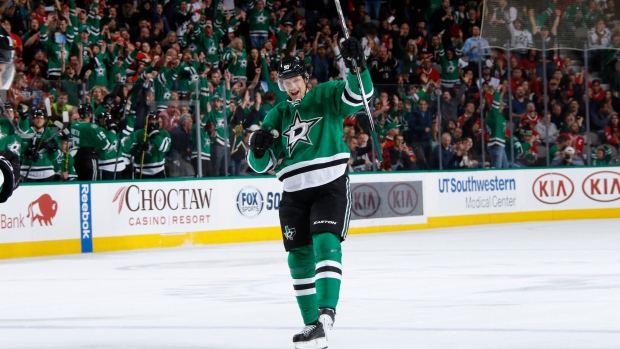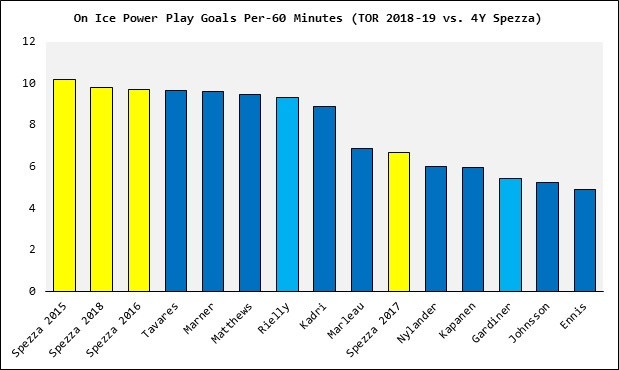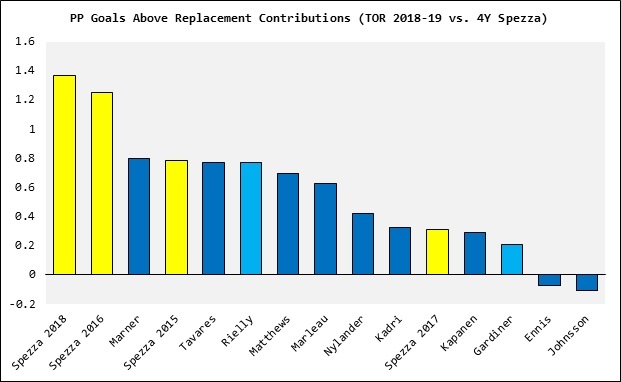Jul 1, 2019
Spezza a sensible value bet by Leafs
Veteran centre a low-risk option to add some offensive creativity to Toronto’s fourth line and second power-play unit, Travis Yost writes.
By Travis Yost

For more than a decade, Jason Spezza spent the prime of his career torturing the Toronto Maple Leafs from the nation’s capital.
Now, the Maple Leafs – bargain shoppers during the free agency period with one major contract outstanding – are tapping the Mississauga, Ont., native to add some much-needed playmaking and creativity to their bottom-six forwards.
At 36 years of age, Spezza might seem to be a curious fit for a Maple Leafs team that’s both youthful and talented at forward. But looking below the surface, you start to see why the team prioritized adding another offensive weapon further down the lineup.
As TSN Hockey Insider Pierre LeBrun noted, Spezza effectively checks three boxes: fourth-line centre, right-handed faceoff weapon and second-unit power play captain. The move also displaces Frederik Gauthier, who has struggled to provide any offence down the Toronto lineup.
Perhaps the most interesting aspect of LeBrun’s note concerns the power play. The Maple Leafs are returning the league’s eighth-best power play (22 per cent conversion rate; 7.8 goals per 60 minutes), and at first pass it wouldn’t seem like an area requiring upgrades. But these power-play units did have shorthanded goals against issues, which dropped their total power play effectiveness to about 16th last year (net 6.4 goals per 60 minutes). Add the loss of Patrick Marleau and Tyler Ennis as second-unit pieces – and the potential loss of Nazem Kadri – and you have some legitimate personnel needs.
That’s where Spezza could help. If we start by looking at each Toronto skater’s power play results from last year against Spezza’s results in Dallas over the last four years, you can see just how good Spezza has been at generating dangerous offence and turning those attacking sequences into goals. Spezza’s resume speaks for itself:

The one question you might ask here: How much of the Dallas power play was more about the pieces around Spezza as opposed to Spezza individually? After all, Spezza could be driving high goal-scoring frequencies merely by being the playmaking centre between shooting options like Tyler Seguin, Alexander Radulov, Jamie Benn and Radek Faksa – his four most common power-play linemates from last season. That’s serious weaponry, and it’s plausible that Spezza certainly benefited from a role in that context.
So let’s look at Spezza individually on the power play as opposed to on-ice numbers that could be clouded by environmental factors. For this purpose, I’ll use Goals Above Replacement (GAR) to control for team effects. GAR will allow us to partial out some of the team effects and focus on individual contributions. Here, the players that drive shot volume and shot quality for themselves and their teammates stand out. Again, we see Spezza looking really strong relative to his Toronto peers:

Spezza has been a positive influence on power-play performance over the last four years in Dallas, and putting high-quality shooters around him was instrumental in creating one of the league’s better power-play units. Spezza is no longer a goal scorer at this point in his career, but his playmaking and creativity hasn’t yet abandoned him, and it’s been a valuable asset in man advantage scenarios.
To that end, Spezza seems like a very sensible value bet by the Maple Leafs. For a player making just $700,000 with just one year of term, the risk couldn’t get any lower. If Spezza can add some offensive creativity on the fourth line and Toronto’s second power-play unit, he’ll be more than worth it.


